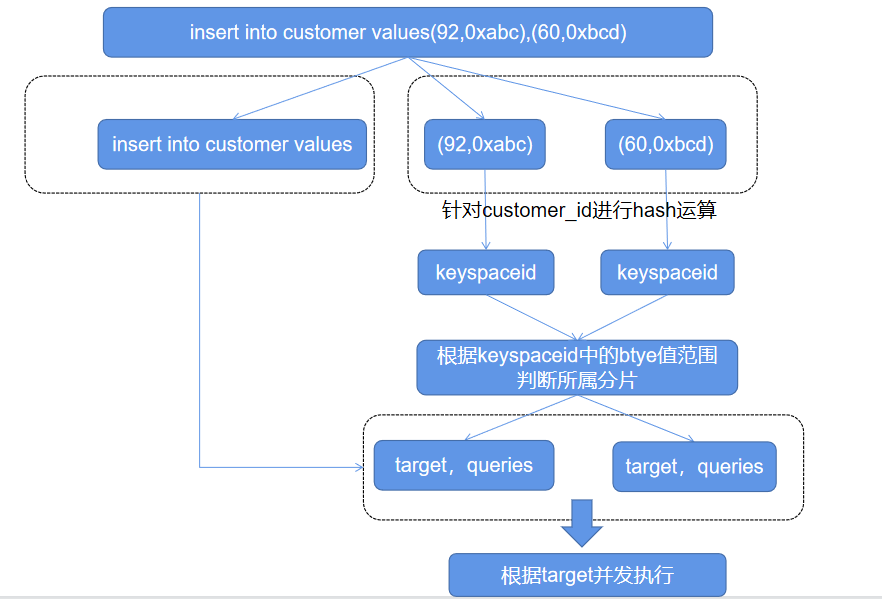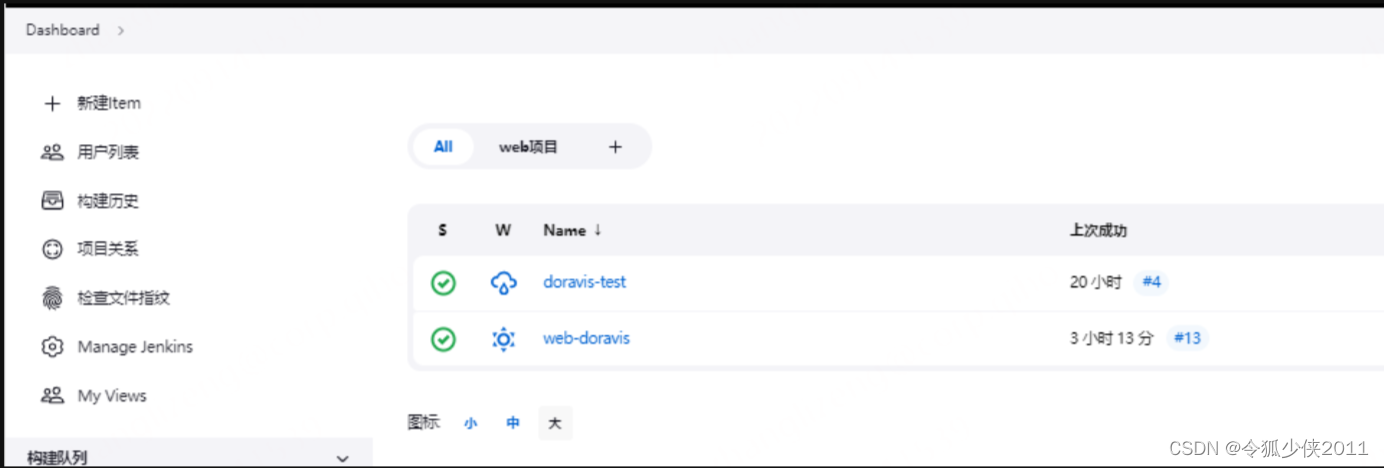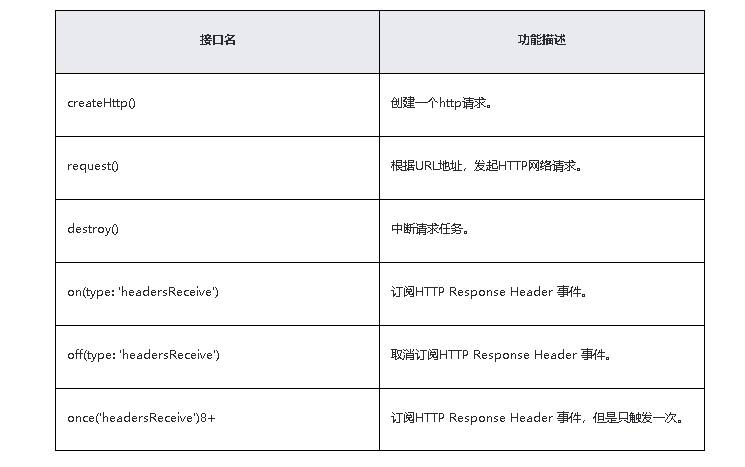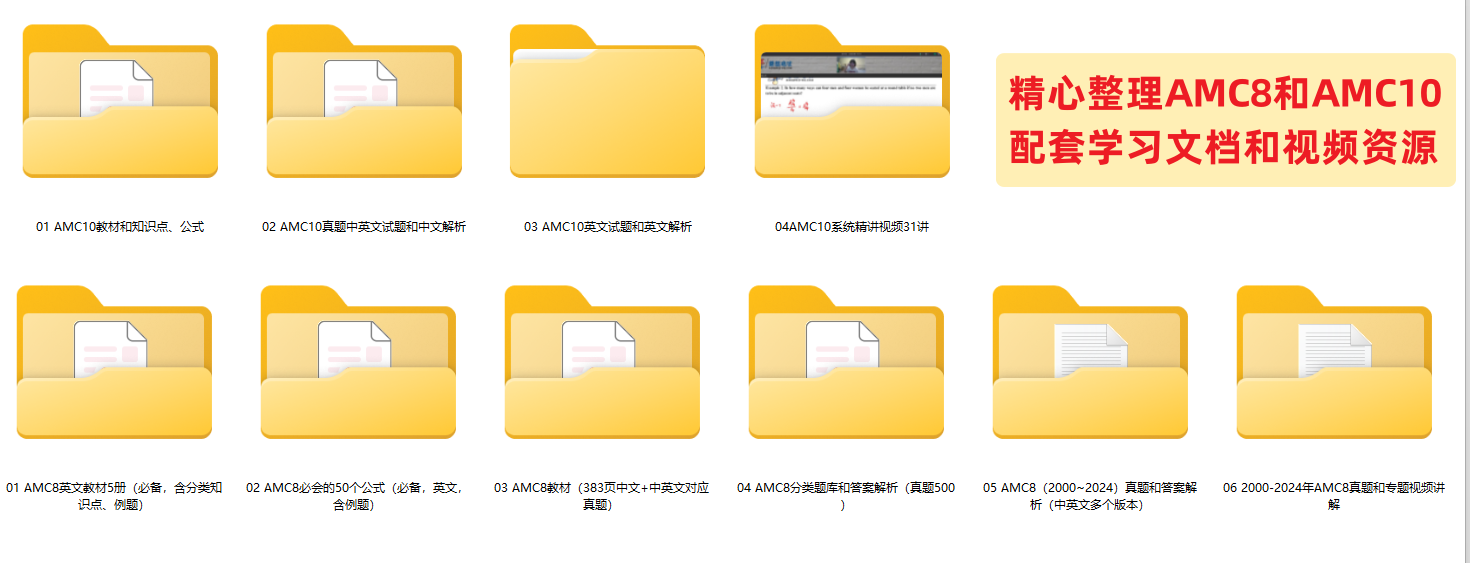| func (ins *Insert) executeInsertQueries(
ctx context.Context,
vcursor VCursor,
rss []*srvtopo.ResolvedShard,
queries []*querypb.BoundQuery,
insertID int64,
) (*sqltypes.Result, error) {
autocommit := (len(rss) == 1 || ins.MultiShardAutocommit) && vcursor.AutocommitApproval()
err := allowOnlyPrimary(rss...)
if err != nil {
return nil, err
} --主要函数入库
result, errs := vcursor.ExecuteMultiShard(ctx, ins, rss, queries, true /* rollbackOnError */, autocommit)
if errs != nil {
return nil, vterrors.Aggregate(errs)
}
if insertID != 0 {
result.InsertID = uint64(insertID)
}
return result, nil
}
// ExecuteMultiShard is part of the engine.VCursor interface.
func (vc *vcursorImpl) ExecuteMultiShard(ctx context.Context, primitive engine.Primitive, rss []*srvtopo.ResolvedShard, queries []*querypb.BoundQuery, rollbackOnError, canAutocommit bool) (*sqltypes.Result, []error) {
noOfShards := len(rss)
atomic.AddUint64(&vc.logStats.ShardQueries, uint64(noOfShards))
err := vc.markSavepoint(ctx, rollbackOnError && (noOfShards > 1), map[string]*querypb.BindVariable{})
if err != nil {
return nil, []error{err}
} --主要函数入口
qr, errs := vc.executor.ExecuteMultiShard(ctx, primitive, rss, commentedShardQueries(queries, vc.marginComments), vc.safeSession, canAutocommit, vc.ignoreMaxMemoryRows)
vc.setRollbackOnPartialExecIfRequired(len(errs) != len(rss), rollbackOnError)
return qr, errs
}
// ExecuteMultiShard implements the IExecutor interface
func (e *Executor) ExecuteMultiShard(ctx context.Context, primitive engine.Primitive, rss []*srvtopo.ResolvedShard, queries []*querypb.BoundQuery, session *SafeSession, autocommit bool, ignoreMaxMemoryRows bool) (qr *sqltypes.Result, errs []error) {
--主要函数入口 return e.scatterConn.ExecuteMultiShard(ctx, primitive, rss, queries, session, autocommit, ignoreMaxMemoryRows)
}
// ExecuteMultiShard is like Execute,
// but each shard gets its own Sql Queries and BindVariables.
//
// It always returns a non-nil query result and an array of
// shard errors which may be nil so that callers can optionally
// process a partially-successful operation.
func (stc *ScatterConn) ExecuteMultiShard(
ctx context.Context,
primitive engine.Primitive,
rss []*srvtopo.ResolvedShard,
queries []*querypb.BoundQuery,
session *SafeSession,
autocommit bool,
ignoreMaxMemoryRows bool,
) (qr *sqltypes.Result, errs []error) {
if len(rss) != len(queries) {
return nil, []error{vterrors.Errorf(vtrpcpb.Code_INTERNAL, "[BUG] got mismatched number of queries and shards")}
}
// mu protects qr
var mu sync.Mutex
qr = new(sqltypes.Result)
if session.InLockSession() && session.TriggerLockHeartBeat() {
go stc.runLockQuery(ctx, session)
}
--多条数据通过goroutine并发执行
allErrors := stc.multiGoTransaction(
ctx,
"Execute",
rss,
session,
autocommit,
func(rs *srvtopo.ResolvedShard, i int, info *shardActionInfo) (*shardActionInfo, error) { --函数指针
var (
innerqr *sqltypes.Result
err error
opts *querypb.ExecuteOptions
alias *topodatapb.TabletAlias
qs queryservice.QueryService
)
transactionID := info.transactionID
reservedID := info.reservedID
if session != nil && session.Session != nil {
opts = session.Session.Options
}
if autocommit {
// As this is auto-commit, the transactionID is supposed to be zero.
if transactionID != int64(0) {
return nil, vterrors.Errorf(vtrpcpb.Code_FAILED_PRECONDITION, "in autocommit mode, transactionID should be zero but was: %d", transactionID)
}
}
qs, err = getQueryService(rs, info, session, false)
if err != nil {
return nil, err
}
retryRequest := func(exec func()) {
retry := checkAndResetShardSession(info, err, session, rs.Target)
switch retry {
case newQS:
// Current tablet is not available, try querying new tablet using gateway.
qs = rs.Gateway
fallthrough
case shard:
// if we need to reset a reserved connection, here is our chance to try executing again,
// against a new connection
exec()
}
}
--具体执行的地方
switch info.actionNeeded {
case nothing:
innerqr, err = qs.Execute(ctx, rs.Target, queries[i].Sql, queries[i].BindVariables, info.transactionID, info.reservedID, opts)
if err != nil {
retryRequest(func() {
// we seem to have lost our connection. it was a reserved connection, let's try to recreate it
info.actionNeeded = reserve
var state queryservice.ReservedState
state, innerqr, err = qs.ReserveExecute(ctx, rs.Target, session.SetPreQueries(), queries[i].Sql, queries[i].BindVariables, 0 /*transactionId*/, opts)
reservedID = state.ReservedID
alias = state.TabletAlias
})
}
case begin:
var state queryservice.TransactionState
state, innerqr, err = qs.BeginExecute(ctx, rs.Target, session.SavePoints(), queries[i].Sql, queries[i].BindVariables, reservedID, opts)
transactionID = state.TransactionID
alias = state.TabletAlias
if err != nil {
retryRequest(func() {
// we seem to have lost our connection. it was a reserved connection, let's try to recreate it
info.actionNeeded = reserveBegin
var state queryservice.ReservedTransactionState
state, innerqr, err = qs.ReserveBeginExecute(ctx, rs.Target, session.SetPreQueries(), session.SavePoints(), queries[i].Sql, queries[i].BindVariables, opts)
transactionID = state.TransactionID
reservedID = state.ReservedID
alias = state.TabletAlias
})
}
case reserve:
var state queryservice.ReservedState
state, innerqr, err = qs.ReserveExecute(ctx, rs.Target, session.SetPreQueries(), queries[i].Sql, queries[i].BindVariables, transactionID, opts)
reservedID = state.ReservedID
alias = state.TabletAlias
case reserveBegin:
var state queryservice.ReservedTransactionState
state, innerqr, err = qs.ReserveBeginExecute(ctx, rs.Target, session.SetPreQueries(), session.SavePoints(), queries[i].Sql, queries[i].BindVariables, opts)
transactionID = state.TransactionID
reservedID = state.ReservedID
alias = state.TabletAlias
default:
return nil, vterrors.Errorf(vtrpcpb.Code_INTERNAL, "[BUG] unexpected actionNeeded on query execution: %v", info.actionNeeded)
}
session.logging.log(primitive, rs.Target, rs.Gateway, queries[i].Sql, info.actionNeeded == begin || info.actionNeeded == reserveBegin, queries[i].BindVariables)
// We need to new shard info irrespective of the error.
newInfo := info.updateTransactionAndReservedID(transactionID, reservedID, alias)
if err != nil {
return newInfo, err
}
mu.Lock()
defer mu.Unlock()
// Don't append more rows if row count is exceeded.
if ignoreMaxMemoryRows || len(qr.Rows) <= maxMemoryRows {
qr.AppendResult(innerqr)
}
return newInfo, nil
},
)
if !ignoreMaxMemoryRows && len(qr.Rows) > maxMemoryRows {
return nil, []error{vterrors.NewErrorf(vtrpcpb.Code_RESOURCE_EXHAUSTED, vterrors.NetPacketTooLarge, "in-memory row count exceeded allowed limit of %d", maxMemoryRows)}
}
return qr, allErrors.GetErrors()
}
// multiGoTransaction performs the requested 'action' on the specified
// ResolvedShards in parallel. For each shard, if the requested
// session is in a transaction, it opens a new transactions on the connection,
// and updates the Session with the transaction id. If the session already
// contains a transaction id for the shard, it reuses it.
// The action function must match the shardActionTransactionFunc signature.
//
// It returns an error recorder in which each shard error is recorded positionally,
// i.e. if rss[2] had an error, then the error recorder will store that error
// in the second position. --multiGoTransaction具体实现
func (stc *ScatterConn) multiGoTransaction(
ctx context.Context,
name string,
rss []*srvtopo.ResolvedShard,
session *SafeSession,
autocommit bool,
action shardActionTransactionFunc,
) (allErrors *concurrency.AllErrorRecorder) {
numShards := len(rss)
allErrors = new(concurrency.AllErrorRecorder)
if numShards == 0 {
return allErrors
}
--函数指针
oneShard := func(rs *srvtopo.ResolvedShard, i int) {
var err error
startTime, statsKey := stc.startAction(name, rs.Target)
defer stc.endAction(startTime, allErrors, statsKey, &err, session)
shardActionInfo, err := actionInfo(ctx, rs.Target, session, autocommit, stc.txConn.mode)
if err != nil {
return
}
updated, err := action(rs, i, shardActionInfo)
if updated == nil {
return
}
if updated.actionNeeded != nothing && (updated.transactionID != 0 || updated.reservedID != 0) {
appendErr := session.AppendOrUpdate(&vtgatepb.Session_ShardSession{
Target: rs.Target,
TransactionId: updated.transactionID,
ReservedId: updated.reservedID,
TabletAlias: updated.alias,
}, stc.txConn.mode)
if appendErr != nil {
err = appendErr
}
}
}
if numShards == 1 {
// only one shard, do it synchronously.
for i, rs := range rss {
oneShard(rs, i)
}
} else {
var wg sync.WaitGroup --多shard并发执行
for i, rs := range rss {
wg.Add(1)
go func(rs *srvtopo.ResolvedShard, i int) {
defer wg.Done()
oneShard(rs, i)
}(rs, i)
}
wg.Wait()
}
if session.MustRollback() {
_ = stc.txConn.Rollback(ctx, session)
}
return allErrors
}
|



















